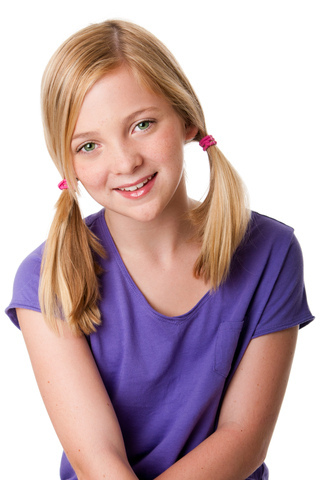April 15th, 2020

Patients who want corrective braces but don’t like the look of traditional braces with the metal showing on the front have an alternative in lingual braces. As opposed to metal braces visible across the front of the teeth, lingual braces are placed on the rear of the teeth. Most of the metal in lingual braces is not visible to other people, unless you have widely-spaced teeth. For those who make good candidates for lingual braces, Dr. Douglas and Larry Harte and our team at Harte Orthodontics will tell you it is a great alternative with a significant cosmetic benefit.
Benefits of Lingual Braces
The primary benefit of lingual braces is that the metal is on the back of the teeth, which is very rarely seen by anyone. Patients can comfortably talk and smile, without the added worry of someone noticing the metal braces on their teeth. Another advantage of lingual braces is that they are just as effective as traditional braces and are worn for the same amount of time. They are also helpful for people who play contact sports or play wind instruments because lingual braces don’t get in the way. Finally, lingual braces are a great option for patients who have are sensitive to plastic and can’t wear other types of clear or invisible braces.
Who can get lingual braces?
While many patients qualify for lingual braces, not everyone who needs corrective orthodontic treatment will be a good candidate. The best candidates are teenagers and adults with normal-sized teeth. Children who get braces often have smaller teeth, so lingual braces may not be suitable. A patient’s bite also makes a difference, because a deep vertical overbite makes lingual braces difficult to place.
Talk to Dr. Douglas and Larry Harte the possibility of lingual braces if you’re thinking about correcting your smile but don’t like the idea of metal braces worn on the front. Lingual braces have the same basic benefits of straightening teeth, correcting misalignments, and fixing overbites and underbites that regular braces offer, but are a great aesthetic alternative.
For more information about lingual braces, or to schedule an initial consultation with Dr. Douglas and Larry Harte, please give us a call at our convenient Sparta or Livingston, NJ office!
April 8th, 2020

The stereotypical braces wearer – in middle school, with a mouth full of metal brackets – has led to numerous myths about orthodontics that discourage many people from getting the dental care they need. Dr. Douglas and Larry Harte and our staff would like to put some of these myths to rest.
Myth 1: Orthodontic treatment is for kids. Although teenagers often visit the orthodontist to get braces, adults represent a growing proportion of orthodontic patients. Whether you’re eight or 80, a consultation with an orthodontist can identify problems with your teeth, jaws, or bite that can be corrected by orthodontic interventions.
Myth 2: Traditional, metal braces are my only option. Advances in orthodontic technology have rendered improved braces and other orthodontic appliances that are much less noticeable than the braces of yesteryear. Ask Dr. Douglas and Larry Harte about Invisalign® braces and other options that make sense for your situation.
Myth 3: Orthodontic treatment is only helpful for crooked teeth. Sure, a crooked smile is a common reason that patients seek orthodontic care. However, orthodontic interventions help with a range of dental health problems. From missing teeth to overbite to jaw misalignment, your orthodontist can help with many problems associated with the teeth, gums, and jaws.
Myth 4: Orthodontic treatment is too expensive. As with any medical procedure, orthodontics can be pricey. However, our Sparta or Livingston, NJ team works with patients to find payment plans, insurance coverage, or other payment options that reduce the financial burden.
April 1st, 2020

It's springtime and it's again time to remind our patients at Harte Orthodontics to protect their faces and pearly whites while out on the field playing sports. According to the National Youth Sports Safety Foundation, children, high-school athletes and adults have more than 5,000,000 teeth knocked out in sporting events annually.
If you are planning on participating in spring sports, it’s imperative to have a proper-fitting mouthguard. Mouthguards can prevent chipped or broken teeth, lip and cheek injuries, jaw fractures, mouth lacerations and even concussions.
Having a mouthguard can make the difference between losing your teeth or not, and because many of our patients who play high school sports have jaws that are still growing, last year’s mouthguard may no longer fit as it should. Dr. Douglas and Larry Harte and our team at Harte Orthodontics can fit you for a new guard.
To learn more about mouthguards or for general questions about your treatment at our Sparta or Livingston, NJ office, please give us a call!
March 4th, 2020

You may have noticed that we specialize in orthodontics and dentofacial orthopedics. And while most people we talk to have heard of orthodontics, many are confused by the dentofacial orthopedics part of the title. Today, Dr. Douglas and Larry Harte and our team thought we would explain the difference.
While orthodontics entails the management of tooth movement, dentofacial orthopedics involves the guidance of facial growth and facial development, which occurs for the most part during childhood, and is a reason why kids are often the best candidates for receiving dentofacial orthopedic therapy. Dr. Douglas and Larry Harte will examine and monitor your child’s growth to determine when starting treatment will be most effective. If your child begins orthodontic treatment before his or her adult teeth have erupted, it is known as Phase-One treatment. During this phase, Dr. Douglas and Larry Harte will use treatments designed to correct your child’s jaw growth and make sure that the jaw bone is properly aligned before beginning the next phase of treatment, which usually involves placing braces to straighten your child's teeth.
Dentofacial orthopedics is also used to treat adult patients at Harte Orthodontics, however, this process may involve surgery. With our younger patients, we know the jaw bones are still forming, making it easier for our team at Harte Orthodontics to control bone growth and tooth movement. Adults, however, are a different story; their bones are no longer growing, and their jaw bones have hardened, so it is more difficult to adjust the bite and move teeth into proper alignment. Dr. Douglas and Larry Harte may recommend surgery to adjust the jaw bone and establish the proper bite alignment before beginning treatment.
Because our team at Harte Orthodontics is skilled in both areas, we are able to diagnose any misalignments in the teeth and jaw as well as the facial structure, and can devise a treatment plan that integrates both orthodontic and dentofacial orthopedic treatments.
We hope that helps! To learn more about dentofacial orthopedics, and to find out if this type of treatment is right for you, please contact our Sparta or Livingston, NJ office and schedule an initial consultation for you or your child. It’s never too late to get a great smile, and we can’t wait to help you or your child get started.






